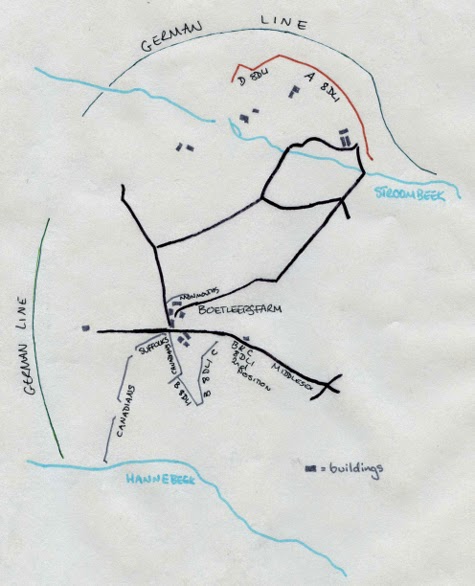Whilst the Second Battle of Ypres was taking place on the Western Front, an event occurred that brought the atrocities of war into sharp focus for those at home. The following is the first guest post by archivist Jo Vietzke.
 |
D/DLI 13/2/105(16) Postcard of a drawing depicting the
sinking of the Lusitania
after her being torpedoed by a German submarine, 7 May 1915
|
May 7th
1915 is one of those “big dates” in terms of the history of the First World
War. On that day a German submarine, the
U-20, torpedoed and sank the Lusitania. The Lusitania
was a passenger ship sailing from Liverpool to New York, although there is a debate
that carries on today about whether it was also carrying munitions (1 & 2). On board were 1,257 civilian passengers and 702 crew (3).
Once the impact had been
felt by those on board, the luxury Cunard liner began to list, take on water
and after just 18 minutes, sank off the southern coast of Ireland. More
than half of those on board lost their lives, including 94 children.
Moral outrage
The international outcry was
massive. History books often credit the
sinking of the Lusitania for the involvement
of America
in the First World War. While President Woodrow
Wilson undoubtedly came under pressure due to the 128 US citizens drowned, America did not enter the war until
April 1917, almost 2 years after the sinking.
A fact which dilutes this theory, somewhat!
In England
the drowning of civilians played straight into the hands of the popular image
of the barbaric hun. Army recruitment
drives made the most of the sinking and the Auckland
and County Chronicle of 20 May reports an open-air meeting in Seaham where George Harrison, a survivor of
the Lusitania,
encouraged men to join up:
He also intended , if possible, to have
a”bat” for his country and to get a bit of his own back. The Germans could not drown him; he would see
if they could kill him. (Applause)
While the War Office tried to channel the populace’s indignation at the
events surrounding the Lusitania
into building up its pre-conscription army, popular feeling burst out in less
controlled ways.
Violence
According to the 1914 Kelly’s Directory the population of the parish of
Crook stood at 9,788 in 1911. It is hard, therefore, to comprehend (or
perhaps even believe) how 8,000-10,000 people came to be involved in a riot in
the small town.
Riots, sparked by the sinking of the Lusitania, occurred all over the
country. Liverpool,
as the port of origin of the ship, saw some of the worst violence. The Times reported on 13 May that over 200 premises, mainly occupied by Germans , had been destroyed and
damage worth £40,000 had been done by the mob.
The East End of London with its large immigrant population also
witnessed shocking scenes of violence. The Liverpool and Merseyside Remembered website shows some shop owners even white washed signs on their shutters stating their
nationalities to avoid being ransacked.
In the north east a spate of rioting took place a week after the first incidents in
Liverpool and London. The papers report outbreaks of violent behaviour
in Crook, Consett, Sunderland and South Shields
on Friday and Saturday, 14 and 15 May.
Although it is not entirely clear why the riots occurred later, the
recruitment drive referred to above and the report in the Durham County Advertiser of
21 May of the funeral of a victim who hailed from Sedgefield on the 15th,
might provide some clues. The fact that
they took place on a Friday and Saturday evening might suggest that alcohol
might also have played a part.
Crook
The riot in Crook was peculiar as the initial violence was aimed at an
English butcher, by the name of John Robert Hodgson. After the event, it was claimed that Hodgson
was targeted because he had helped another, German, butcher named Anthony Bowman
(Bauman). This may well have been the
case but as Hodgson had been a member of the Urban District Council it may well
have been that more than a few locals had an axe to grind with him!
Many of the aspects of the Crook riot could be seen as farcical; the
first missile thrown at Hodgson’s window was a coconut and the handful of
police that turned up to the scene were pelted with “meat, suet, etc” (Durham County
Advertiser, 21 May 1915). However, the
mob then turned their attention to Hodgson’s house, situated at the other end
of the town, where Hodgson’s young children were asleep. All of the windows were smashed. The crowd then took a hay-rack from a nearby
field to use as a battering ram. They
used it to rush through the police cordon that had been formed and then to
smash up Bowman’s shop.
Subsequently, a group of 12 men and one woman were brought before the
magistrate for the damage to Hodgson and Bowman’s shops. Surprisingly, considering the scale of the
riot and the violence involved, the 13 defendants were handed down fines of 5s,
10s 6d and 40s, the latter for assaulting a police officer, and were ordered to
pay costs. On 4 June, the Durham County
Advertiser gave a report of the hearing, the magistrate summed up with the
following statement:
…no doubt the excited state of public
feeling in Crook arose out of the wrongful and wicked doings of the Germans,
especially in connexion with the sinking of the Lusitania.
They believed they were acting patriotically. Unfortunately, it was a patriotism so run to
seed as not to be patriotism at all, but a great mistake.
Further reading:
1) http://www.telegraph.co.uk/news/uknews/defence/9366985/British-not-to-blame-for-rapid-sinking-and-loss-of-life-on-liner-RMS-Lusitania-find-underwater-researchers.html
2) http://www.theguardian.com/world/2014/may/01/lusitania-salvage-warning-munitions-1982
3) http://www.titanicinquiry.org/Lusitania/01Header.php








